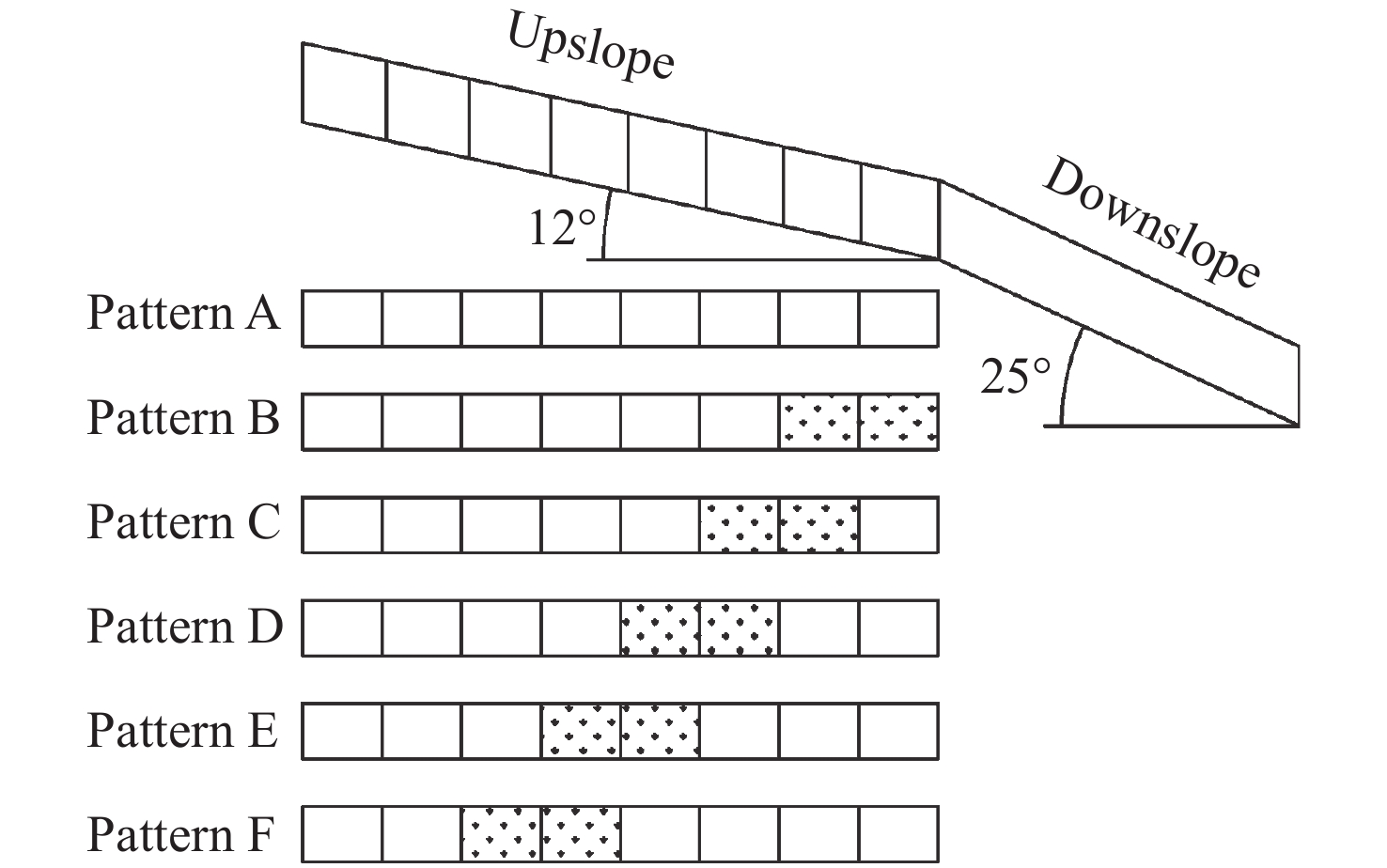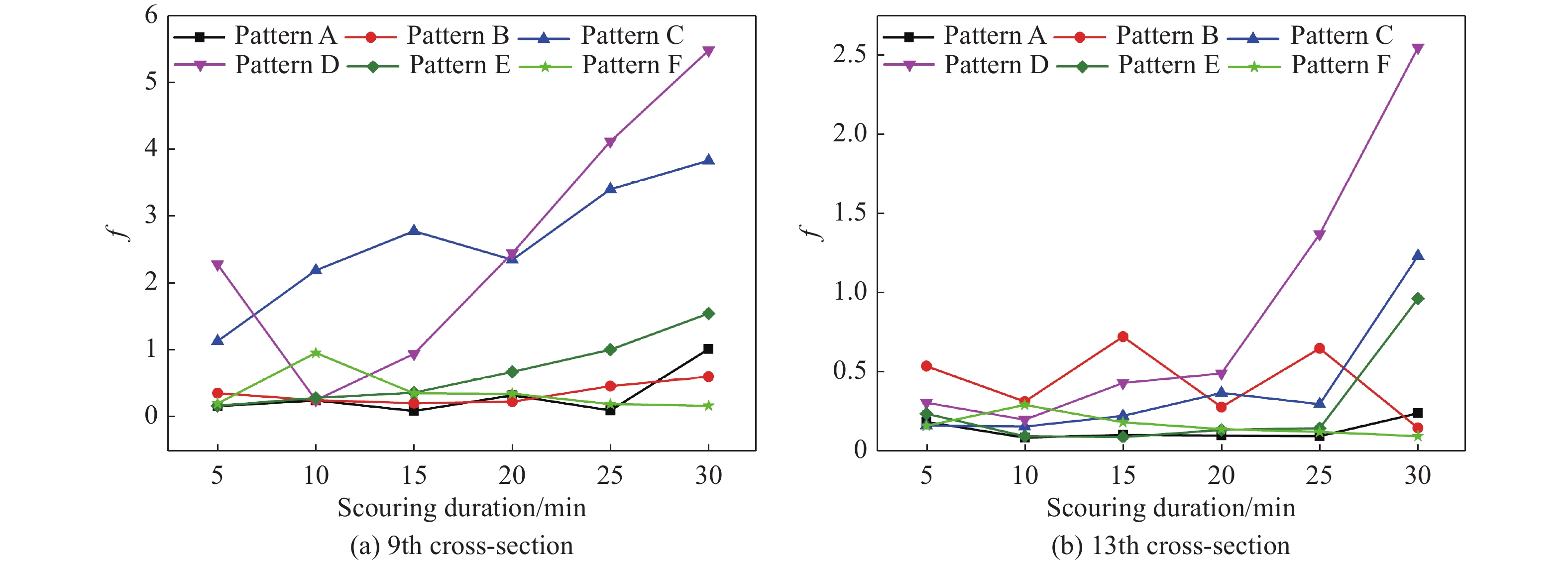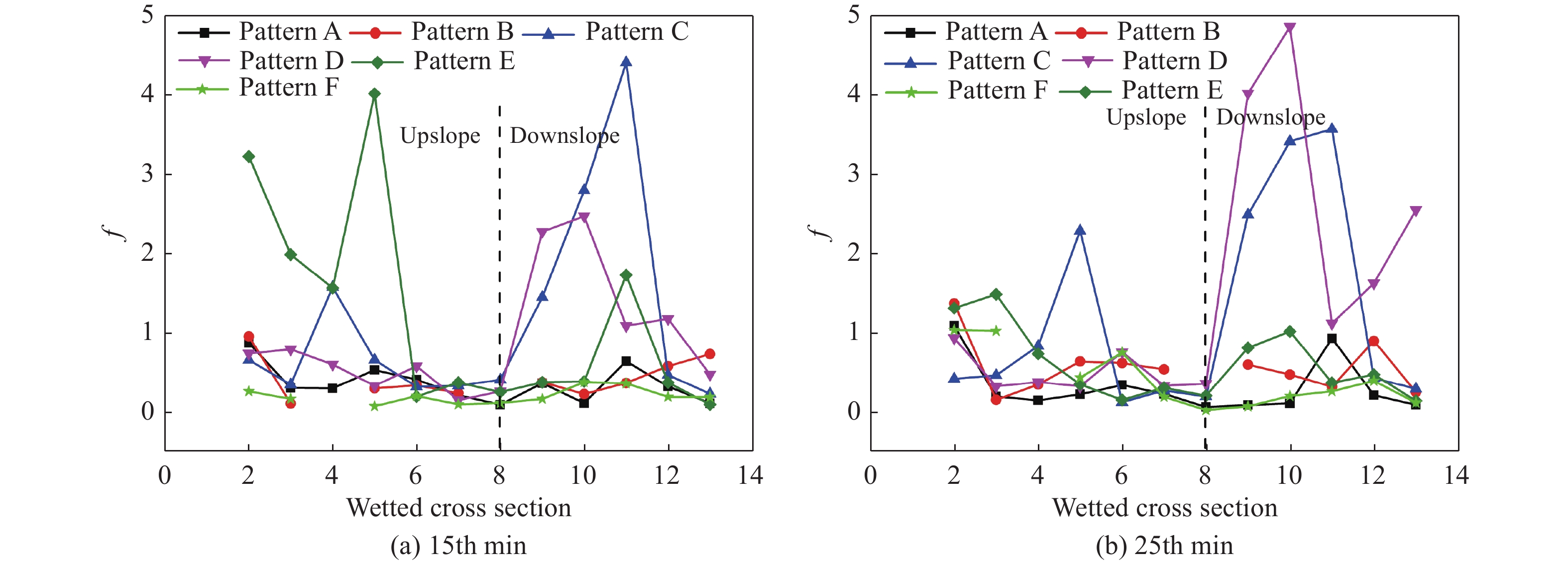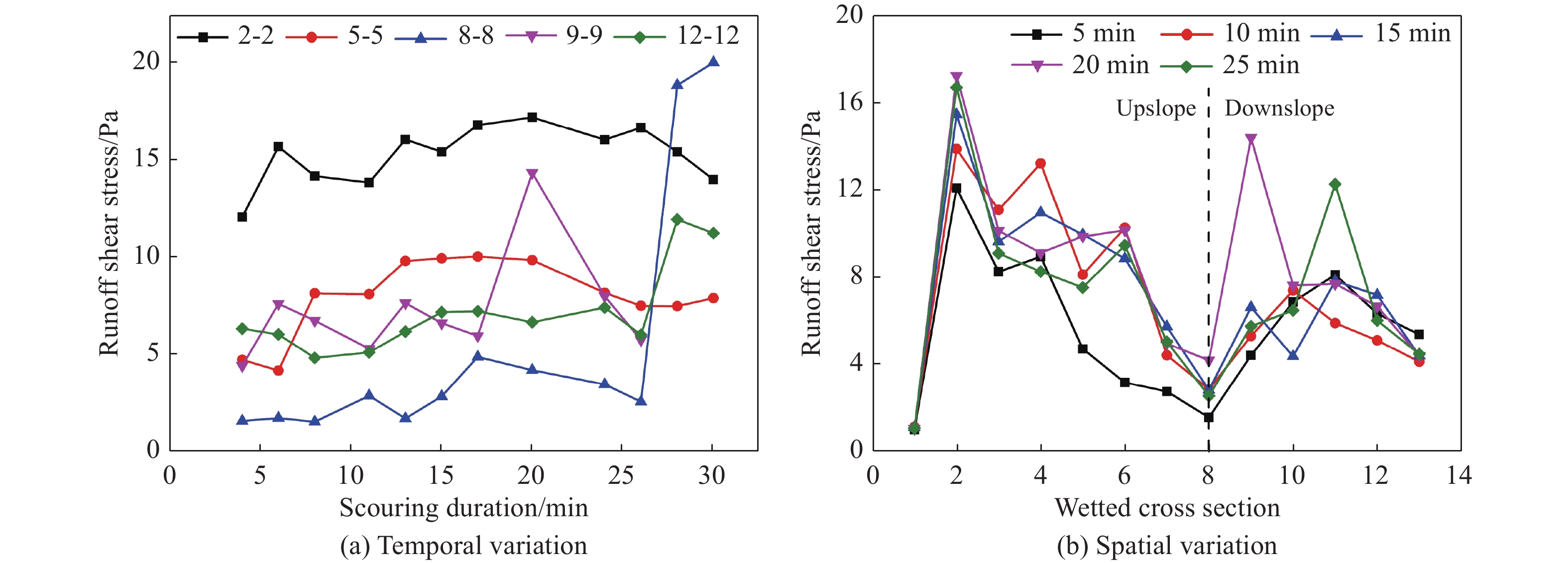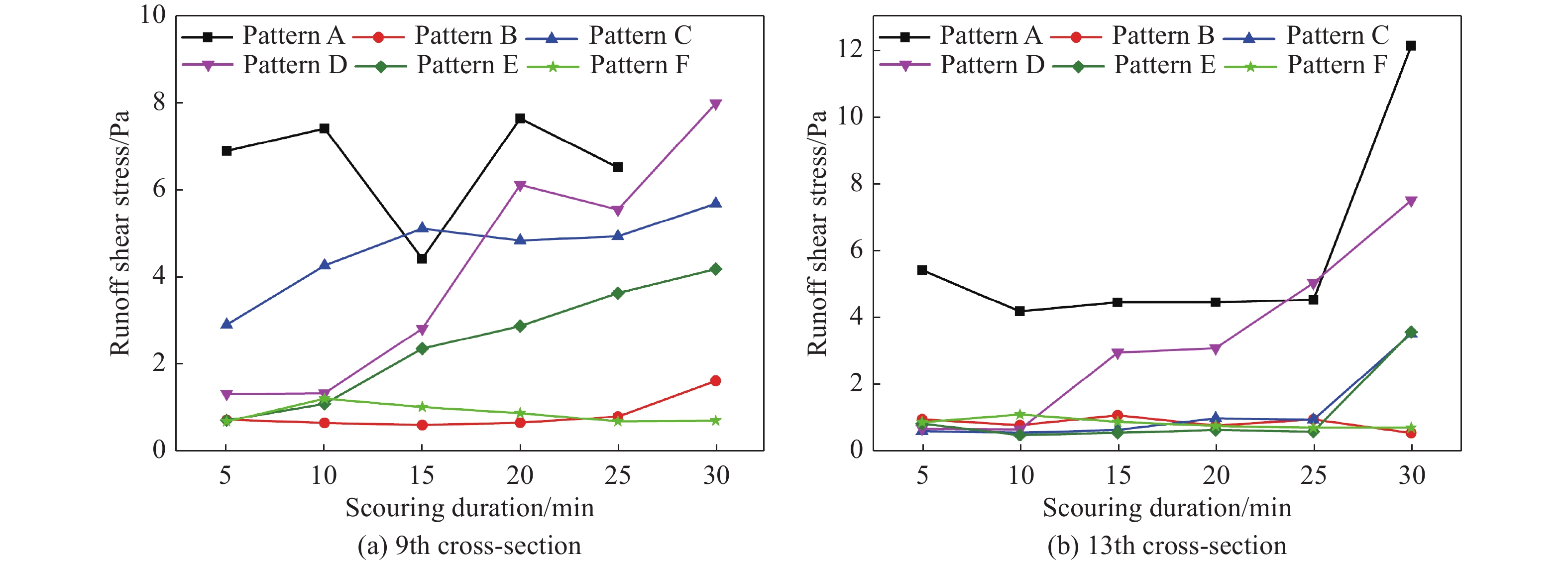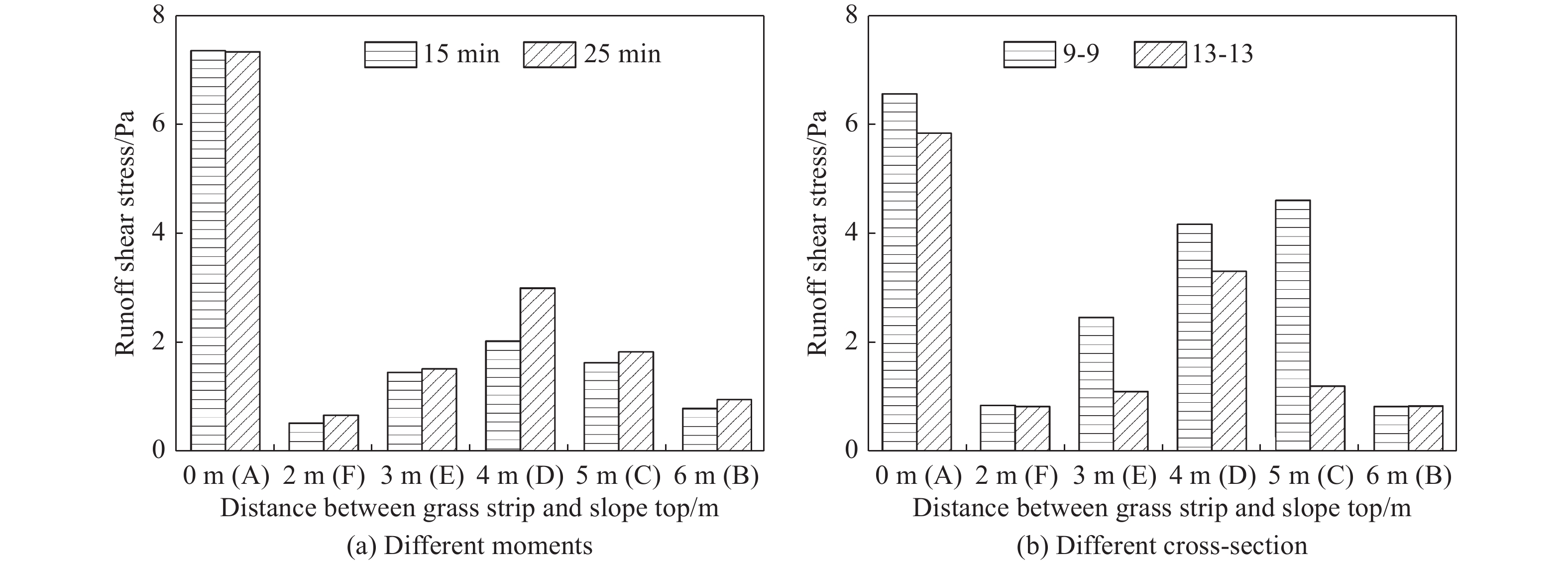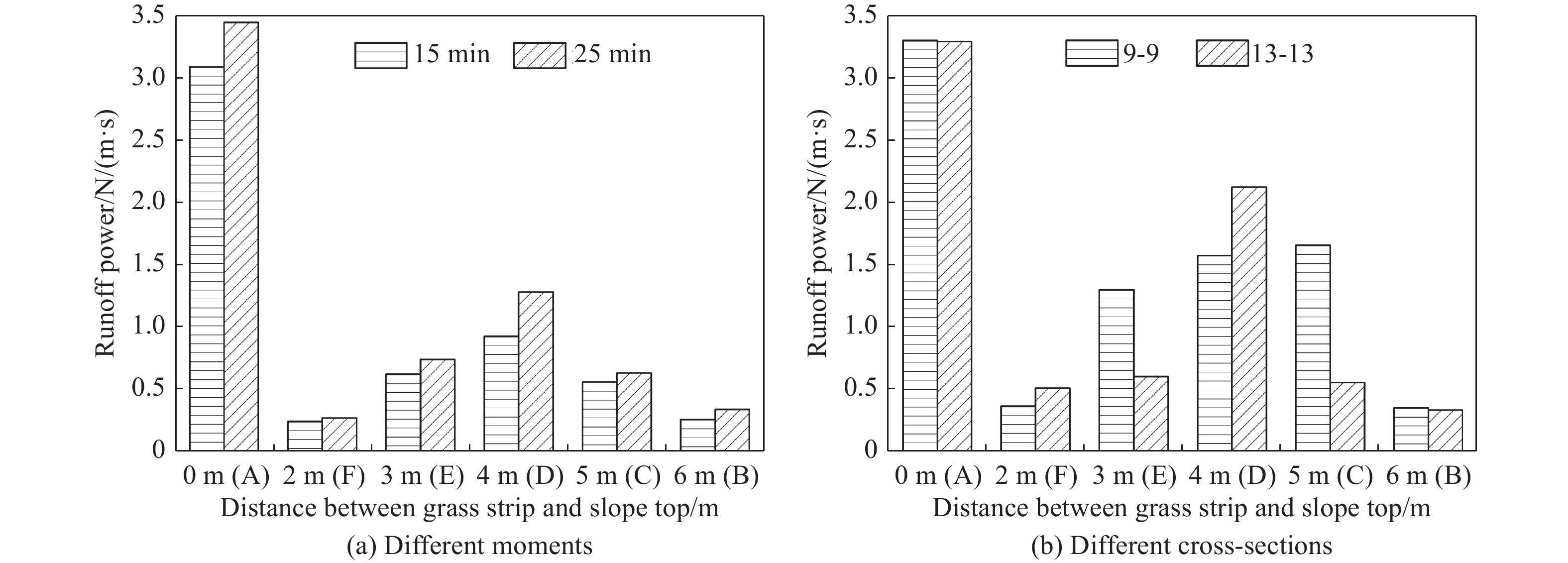Regulation of vegetation pattern on the hydrodynamic processes of erosion on hillslope in Loess Plateau, China
-
Abstract:
As vegetation are closely related to soil erosion, hydrodynamic parameter changes under various vegetation pattern conditions can be used as an important basis for the research of the soil erosion mechanism. Through upstream water inflow experiments conducted on a loess hillslope, how the vegetation pattern influences the hydrodynamic processes of sediment transport was analyzed. The results show that the placement of a grass strip on the lower upslope can effectively reduce runoff erosion by 69%, relying on the efficiency of regulated hydrodynamic process. The effective location of grass strip for hillslope alleviating erosion is on the lower part of the upslope, mainly due to the grass strip measure used to regulate the hydrodynamic system. As a result, the underlying surface runoff resistance is increased by 5 times, runoff shear stress is decreased by more than 90%, and runoff power decreased by over 92%. The measure greatly separates the scouring energy of surface runoff that acts on the slope soil. Therefore, the use of grass strips effectively decreases the energy of runoff flowing along the slope, eliminating soil erosion to a great extent and thereby achieving a better regulation of hydrodynamic processe.
-
Key words:
- Soil erosion /
- Grass strip /
- Scouring experiment /
- Sediment transport /
- Regulating mechanism /
- Loess Plateau
-

-
Table 1. Design of the tested scouring–vegetation patterns
Vegetation pattern Scouring discharge (L/min) Position relative to slope top Vegetation coverage (%) Scouring duration (min) A 16 Bare slope 0 30 B 16 7–8 25 30 C 16 6–7 25 30 D 16 5–6 25 30 E 16 4–5 25 30 F 16 3–4 25 30 Table 2. Reduction in runoff shear stress at different cross-sections for different vegetation patterns (%)
Wetted cross section Vegetation pattern B C D E F 9-9 87.4 29.8 36.4 62.5 87.1 13-13 85.7 79.5 43.5 81.2 85.9 Table 3. Reduction in runoff shear stress at different moments for different vegetation patterns (%)
Time (min) Vegetation pattern B C D E F 15 89.3 77.9 72.6 80.3 93.0 25 87.1 75.2 59.2 79.4 91.0 Table 4. Decrease in runoff power at different cross-sections for different vegetation patterns (%)
Wetted cross section Vegetation pattern B C D E F 9–9 89.4 49.8 52.4 60.7 89.0 13–13 89.9 83.2 44.5 81.8 84.5 Table 5. Decrease in runoff power at different moments for different vegetation patterns (%)
Time (min) Vegetation pattern B C D E F 15 91.7 82.0 70.1 79.9 92.2 25 90.2 81.7 62.9 78.6 92.2 -
Chang M, Dou XY, Tang C, et al. 2019. Hazard assessment of typical debris flow induced by rainfall intensity. Earth Science, 44(8): 2794−2802. (in Chinese)
Chaplot V, Dlamini P, Chivenge P. 2016. Potential of grassland rehabilitation through high density-short duration grazing to sequester atmospheric carbon. Geoderma, 271: 10−17. DOI:10.1016/j.geoderma.2016.02.010.
Cui YX, Fang LC, Guo XB, et al. 2019. Natural grassland as the optimal pattern of vegetation restoration in arid and semi-arid regions: Evidence from nutrient limitation of soil microbes. Science of the Total Environment, 648: 388−397. DOI:10.1016/j.scitotenv.2018.08.173.
Dang XY, Lu N, Gu XF, et al. 2021. The relationship between groundwater and natural vegetation in Qaidam Basin. Journal of Groundwater Science and Engineering, 9(4): 341−349.
Fu BJ, Liu Y, Lyu Y, et al. 2011. Assessing the soil erosion control service of ecosystems change in the Loess Plateau of China. Ecological Complexity, 8: 284−293. DOI:10.1016/j.ecocom.2011.07.003.
Gao GY, Fu BJ, Lyu YH, et al. 2013. The effect of land cover pattern on hillslope soil and water loss in the arid and semi-arid region: Areview. Acta Ecologica Sinica, 33(1): 12−22. (in Chinese)
Ghafari H, Gorji M, Arabkhedri M, et al. 2017. Identification and prioritization of critical erosion areas based on onsite and offsite effects. Catena, 156: 1−9. DOI:10.1016/j.catena.2017.03.014.
Jiang LB, Zhang HL, Yang PP, et al. 2017. Hydrodynamics of overland flow under combined effects of precipitation and slope discharge. Journal of Beijing Forestry University, 39(8): 77−86. (in Chinese)
Li G, Abrahams AD, Atkinson JF, 1996. Correction factors in the determination of mean velocity of overland flow. Earth Surface Process and Landforms, 21: 509–515.
Li M, Yao WY, Ding WF, et al. 2009. Effect of grass coverage on sediment yield in the hillslope–gully side erosion system. Journal of Geographical Sciences, 19: 321−330. DOI:10.1007/S11442-009-0321-8.
Luo M, Pan C, Cui Y, et al. 2020. Sediment particle selectivity and its response to overland flow hydraulics within grass strips. Hydrological Process, 34: 5528−5542. DOI:10.1002/hyp.13964.
Meng CC, Zhang HL, Yang PP. 2017. Effects of simulated vegetation types and spatial patterns on hydrodynamics of overland flow. Journal of Soil and Water Conservation, 31(2): 50−56,78. (in Chinese)
Nearing MA, Simanton JR, Norton LD. 1999. Soil erosion by surface water flow on a stony, semiarid hillslope. Earth Surface Process and Landforms, 24: 677−686. DOI:10.1002/(SICI)1096-9837(199908)24:8<677: AID-ESP981>3.0.CO;2-1.
Niu YB, Wu X, Gao ZL, et al. 2020. Characteristics of soil erosion on engineering accumulation slope under the rainfall and inflow conditions. Transactions of the Chinese Society of Agricultural Engineering (Transactions of the CSAE), 36(8): 69−77. (in Chinese)
Pan CZ, Shangguan ZP. 2007. The effects of ryegrass roots and shoots on loess erosion under simulated rainfall. Catena, 70: 350−355. DOI:10.1016/J.CATENA.2006.11.002.
Pan CZ, Ma L, Wainwright J, et al. 2016. Overland flow resistances on varying slope gradients and partitioning on grassed slopes under simulated rainfall. Water Resources Research, 52(4): 2490−2512. DOI:10.1002/2015WR018035.
Pan CZ, Ma L. 2019. How the spatial distribution of grass contributes to controlling hillslope erosion. Hydrological Processes, 34: 68−81. DOI:10.1002/hyp.13573.
Qu CX, Wang MY, Wang P. 2022. Experimental and numerical investigation of groundwater head losses on and nearby short intersections between disc-shaped fractures. Journal of Groundwater Science and Engineering, 10(1): 33−43. DOI:10.19637/j.cnki.2305-7068.2022.01.004.
Shen HO, Zheng FL, Wen LL, et al. 2015. An experimental study of rill erosion and morphology. Geomorphology, 231: 193−201. DOI:10.1016/J.GEOMORPH.2014.11.029.
Shi MX, Wu FQ, Tian GC, et al. 2015. Experimental study on effect of surface roughness on overland flow velocity. Journal of Hydroelectric Engineering, 34(7): 83−87. (in Chinese)
Shi ZH, Liu QJ, Zhang HY, et al. 2020. Study on soil erosion and conservation in the past 10 years: Progress and prospects. Acta Pedologica Sinica, 57(5): 1117−1127. (in Chinese)
Sun JY, Zhang L, Zhao L, et al. 2016. Experimental study of the efects of diferent height fexible vegetation on hydraulic characteristics of overland flow. Mechanics in Engineering, 38(3): 283−289. (in Chinese)
Wang B, Zhang GH, Shi YY, et al. 2014. Soil detachment by overland flow under different vegetation restoration models in the Loess Plateau of China. Catena, 116: 51−59. DOI:10.1016/J.CATENA.2013.12.010.
Wang JJ, Zhang KD, Yang M, et al. 2017. Influence of rainfall and roughness on hydrodynamics characteristics of overland flow. Transactions of the Chinese Society of Agricultural Engineering (Tramsactions of the CSAE), 33(9): 147−154. (in Chinese)
Wang LS, Cai QG, Cai CF, et al. 2014. Morphological changes of rill on loess slope and its relationship with flow velocity. Transactions of the Chinese Society of Agricultural Engineering, 30(11): 110−117. (in Chinese)
Wang YQ, Shao MA, Shao HB. 2010. A preliminary investigation of the dynamic characteristics of dried soil layers on the Loess Plateau of China. Journal of Hydrology, 381: 9−17. DOI:10.1016/J.JHYDROL.2009.09.042.
Wu QJ, Wu FQ, Wang LH. 2014. Hydrodynamic characteristics of overland flow under soil crusts. Transactions of the Chinese Society of Agricultural Engineering (Tramsactions of the CSAE), 30(1): 73−80. (in Chinese)
Wu S, Wu P, Feng H, et al. 2011. Effects of alfalfa coverage on runoff, erosion and hydraulic characteristics of overland flow on loess slope plots. Frontiers of Environmental Science Engineering in China, 5: 76−83. DOI:10.1007/s11783-011-0282-x.
Xiao PQ, Yao WY, Wang GQ, et al. 2016. Effect of soil shear strength and runoff erosivity on slopes with different vegetation cover. Advances in Water Science, 27(2): 224−230. (in Chinese)
Yang CX, Yao WY, Xiao PQ, et al. 2019. Effects of vegetation cover structure on runoff and sediment yield and its regulation mechanism. Journal of Hydraulic Engineering, 50(9): 1078−1085. (in Chinese)
Yang PP, Wang YQ, Zhang HL, et al. 2018. Effects of roughness element on overland flow resistance under interaction of simulated rainfall and surface roughness. Transactions of the Chinese Society of Agricultural Engineering (Tramsactions of the CSAE), 34(6): 145−151. (in Chinese)
Yu GQ, Zhang MS, Hu W. 2014. Analysis on the hydrodynamic conditions for the massive debris flow in Sanyanyu. Northwestern Geology, 47(3): 185−191. (in Chinese)
Zhang GH, Liu BY, Liu GB, et al. 2003. Detachment of undisturbed soil by shallow flow. Soil Science Society of America Journal, 67(3): 713−719. DOI:10.2136/sssaj2003.0713.
Zhang GH, Liu BY, Nearing MA, et al. 2002. Soil detachment by shallow flow. Trans. ASAE, 45(2): 351−357. DOI:10.13031/2013.8527.
Zhang KD, Wang GQ, Sun XM, et al. 2014. Hydraulic characteristic of overland flow under different vegetation coverage. Advances in Water Science, 25(6): 825−834. (in Chinese)
Zhang X, Wu B, Ling F, et al. 2010. Identification of priority areas for controlling soil erosion. Catena, 83: 76−86. DOI:10.1016/J.CATENA.2010.06.012.
Zhang X, Yu GQ, Li ZB, et al. 2014. Experimental study on slope runoff, erosion and sediment under different vegetation types. Water Resources Management, 28: 2415−2433. DOI:10.1007/s11269-014-0603-5.
Zhang X, Zhang L, Zhao J, et al. 2008. Responses of stream flow to changes in climate and land use/cover in the Loess Plateau, China. Water Resources Research, 44(7): W00A07. DOI:10.1029/2007WR006711.
Zhao C, Gao J, Huang Y, et al. 2015. Effects of vegetation stems on hydraulics of overland flow under varying water discharges. Land Degradation Development, 27: 748−757. DOI:10.1002/ldr.2423.
Zhou J, Fu BJ, Gao GY, et al. 2016. Effects of precipitation and restoration vegetation on soil erosion in a semi-arid environment in the Loess Plateau, China. Catena, 137: 1−11. DOI:10.1016/J.CATENA.2015.08.015.
-




 下载:
下载:
